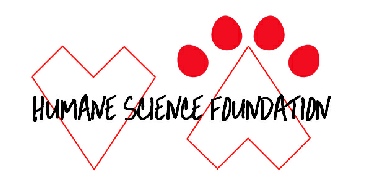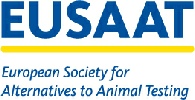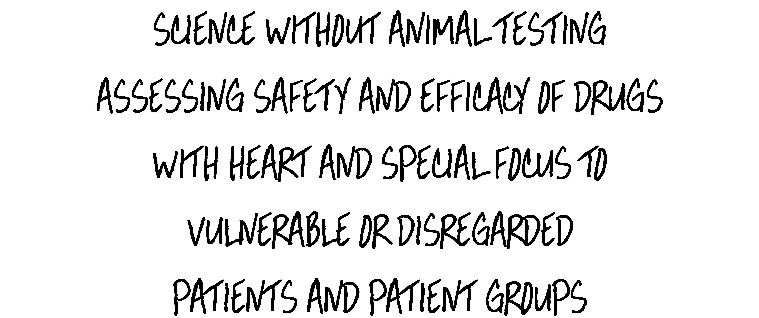






Contributions of the Humane Science Foundation to
the EUSAAT Conference Linz, 2016
EUSAAT, the European Society for Alteratives to Animal Testing, organizes a conference on alternatives to animal testing yearly. Its audience consists of researchers coming from industry, knowledge institutes and university. In 2016, we cooperated to invite lecturers from all over the world, in order to inform researchers in human safety about replacement of animal testing and the latest developments in innovative and animal-free technology. The abstract book of the conference can be downloaded here.
2016 Key Note Lectures
* Qualitative reasoning about biological processes and systems: Computational approaches
to reduce animal testing (Strategic Medicine, USA)
Precision medicine proposes to improve healthcare through the application of genetic information but critical gaps remain in the translation between theory and practice. Mathematics is considered the language of physics; physics, the language of chemistry; and chemistry, the language of biology. We must also understand the language’s punctuation and grammar, i.e. the processes and systems in biology that amplify and modulate the molecular aspects of its component languages. We apply qualitative reasoning to enable progress to be made in light of imperfect information and knowledge.
Computational Modeling: Biological pathways represent topological networks of interacting macromolecular entities. The biochemist sees enzymes and receptors; the chemist sees substrates, products and discrete kinetic parameters; the molecular biologist sees expression levels and polymorphisms. The biological function of the pathway requires integration of all these characteristics, thus providing separable features that critically distinguish between its activity in human and in an animal model. We have applied both Petri net and stochastic activity network analysis to enable qualitative modeling of pathway behavior involving variation of all these characteristics, and using pathway, in vivo, as opposed to in vitro, discrete experimental data. This modeling approach allows for the comparison between topological and functional equivalence that is critical to evaluate alternative approaches to animal models. Examples of studies in blood coagulation and in menopause models will be shown.
Knowledge Modeling: Our development of a comprehensive and objective model of the disease process also serves as a data model for virtual data integration centered about the progression of a human from pre-disease through diagnosis, treatment and outcome. This disease-agnostic knowledge structure is used to evaluate the existing definitions in a specific disease and/or patient population and has been implemented into an ontology and computational platform. This model has been applied in oncology, heart failure, respiratory disease, MS, brain aneurysms, etc and has revealed a general problem. Almost all diseases can be categorized as complex disorders or syndromes and this significantly impacts and limits the accuracy of diagnosis, treatment decisions and outcome. Notably, this lack of adequate stratification and delineation of discrete disease processes has a major impact on establishing the suitability of an animal model for testing and evaluating drug efficacy and safety. This knowledge/informatic-based modeling provides critical insight into reducing the inappropriate utilization of animal models and points to critical limitations in current clinical data modeling. Examples in several disease areas will be presented. References see the abstract bundle page 207
* Real world medicine and real world patients: something that animal testing can never approximate (Strategic Medicine, USA)
There are many good reasons to question the value of animal testing that range from ethical considerations to their potential for predicting human response and these questions support the need to develop alternative approaches for drug development. The predictability issue focuses on whether the transition from animal studies to clinical trials in humans is successful but in reality this is only part of a problem that raises much larger concerns about the use of animal models. The gap between the animal models and real world medicine and real world patients is even greater and significantly argues against their potential to be the bridge that crosses it but these issues are rarely discussed. The focus on improving success in clinical trials, based on safety and efficacy testing in animals, fails to address the true complexity that exists in actual disease management: 1) Clinical trials test the efficacy and safety of a drug in a selected, homogeneous patient population that meets criteria to optimize drug performance and rarely, if ever, approximates patients that physicians treat in the real world. It has been noted in many studies that all patients exhibit 5 or more co-morbidities and may be taking as many as 10 medications concurrently, all which impact the effectiveness and safety of the newly approved treatment. Animal models do not accurately represent such patients, in part because pharma does not yet deal with this reality. In addition, each patient is impacted by clinical history as well as environment and lifestyle exposures 2) The design and implementation of studies in animals and
clinical trials in humans requires adherence to strict protocols to enable statistical analysis of data with respect to variation of a minimum of variables. Physicians in the real world are not required to and typically do not follow protocols or even guidelines. Guidelines, whether consensus-based or evidence-based, for use in diagnosis or for treatment, change frequently in almost every disease area. As a result, the application of strict protocols testing in animal models and subsequently in clinical trials does not reflect actual clinical practice. 3) The Institute of Medicine (US) has established that at least 10% of all diagnoses in medicine are wrong. This number is actually grossly underestimated when one considers that almost all diseases are syndromes or complex disorders and that disease stratification is critical to identify the right drug for the right patient. Animal studies cannot overcome this deficiency in our understanding of the natural history of disease and pharma has not yet begun to deal with true understanding of the basis and complexity of the disease process.
Reference see abstract bundle on page 206
2016 Presentations
* Studying liver toxicity and disease modelling using bioprinted 3D human liver tissue (Organovo, USA)
Human tissue biology is strongly influenced by the unique interplay and extensive cross talk that exists between different resident cell populations. These cell types are often spatially arranged in a specific architecture which defines their biological function and mechanistic response to drug treatment over
time. Three-dimensional bioprinted tissues that model this cellular complexity and form offer major advantages over conventional in vitro systems with respect to predictive modeling. Our tissues incorporate key architectural features and primary cell types and can be maintained in culture on a timescale of several days to weeks. We will describe various tissue models under development, including liver and kidney. More specifically, we will discuss case studies using exVive3D™ Bioprinted Human Liver Tissues to assess drug toxicity and metabolism, and their use in the generation of complex disease phenotypes such as fibrosis. Collectively, these results suggest bioprinted tissues respond
selectively to known toxicants following biologically relevant dosing regimens, and that the combination of biochemical, metabolic, and histologic endpoints provide a comprehensive means of examining the progression of tissue injury on a mechanistic basis.
* 3D networks of iPSC-derived neurons and glia for high-throughput neurotoxicity screening (Mimetas, the Netherlands)
The assessment of neurotoxicity remains a major scientific challenge due to the complexity of the central nervous system. Current strategies to evaluate toxicity of drugs and chemicals are predominantly based on ex vivo or in vivo animal studies. These models have limited predictability for neurotoxicity in humans and are not amenable to high-throughput testing. In order to overcome these limitations we are developing a neurotoxicity model based on iPSC-derived neurons in OrganoPlates™ [1,2]. This microfluidic platform enables high-throughput screening of miniaturized organ models. A mixed population of human iPSC-derived neurons consisting of GABAergic and glutamatergic
neurons with supporting astrocytes was cultured in 3D, closely representing the physiology of the human brain. As a part of the validation, proper network formation was observed by neuron-specific immunostainings and neuronal electrophysiology was analyzed by a calcium sensitive dye indicating spontaneous neuronal firing. Additionally, we investigated the doseresponse neurotoxic effects of methylmercury and endosulfan on neuronal viability. The OrganoPlate™ platform enables real time analysis of neurotoxic effects of compounds in highthroughput. This iPSC-derived neuronal model can be used to refine animal experiments and has the potential to better predict adverse effect in humans and hence to improve clinical development success.
References see abstract bundle page 246
* High-throughput microfluidic platform for culture of 3D-kidney tissue models (Mimetas, the Netherlands)
Drug toxicity remains a major issue in drug discovery and stresses the need for better predictive models. Here, we describe the development of a perfused renal proximal tubule cell (RPTC) model in Mimetas’ OrganoPlate® [1] to predict kidney toxicity. The OrganoPlate® is a microfluidic platform, which enables high-throughput culture of boundary tissues in miniaturized organ models. In OrganoPlate®, extracellular matrix (ECM) gels can be freely patterned in microchambers through the use of PhaseGuide technology. PhaseGuides (capillary pressure barriers) define channels within microchambers that can be used for ECM deposition or medium perfusion. The microfluidic channel
dimensions not only allow solid tissue and barrier formation, but also perfused tubular epithelial vessel structures can be grown. The goal of developing a perfused RPTC model is to reconstruct viable and leak-tight boundaries for performing cytotoxicity, as well as transport and efficacy studies. Human RPTC (SA7K clone, Sigma) were grown against an ECM in a 3channel OrganoPlate®, yielding access to both the apical and basal side. Confocal imaging revealed that the cells formed a tubular structure. Staining showed tight junction formations (ZO-1), cilia pointing into the lumen (acetylated tubulin) and correct polarization with microvilli on the apical side of the tubule (ezrin). Tightness of the boundary over several days was shown by diffusion of a dextran dye added to the lumen of the tubule. Addition of toxic compounds resulted in disruption of the barrier which could be monitored in time. The time point of loss of integrity corresponds with the concentration and the toxic effect of the compound. Furthermore, fluorescent transport assays showed functional transport activity of in- and efflux
Transporters. The 3D proximal tubules cultured in the OrganoPlate® are suitable for high-throughput toxicity screening, trans-epithelial transport studies, and complex co-culture models to recreate an
in vivo-like microenvironment.
Reference see abstract bundle page 239
Contributions of the Humane Science Foundation to
the FIGON Dutch Medicines Days
The Dutch Medicines Days (Nederlandse Geneesmiddelendagen)
of the FIGON (Federatie Innovatief Geneesmiddelen Onderzoek Nederland)
gather yearly. Its audience consists of about 800 pharmaceutical
researchers coming from industry, knowledge institutes and university.
From 2009-2015, we have organized and invited each year lecturers from all over the world
in order to inform pharmaceutical researchers about
replacement of animal testing and the latest developments
in innovative and animal-free technology.
Here we provide an overview of subjects and presenting organizations :
2015 Key Note Lectures “On the Frontiers of Pharmaceutical Research”
* Increasing biological relevance in vitro: From single microtissues to micro-physiological systems (InSphero, Switzerland)
* Toxicogenomics-based approaches for improving drug safety assessment (University Maastricht)
* Towards (pre)-clinical trials on a chip and personalized treatment (Institute for human Organ and Disease Model Technologies, the Netherlands)
2015 Session “Tissue Engineering in Pharmaceutical Research”
* Can 3D-bioprinting aid the development of more predictive in vitro testing models? (University
of Utrecht)
* Novel technologies to studying pharmacological approaches for kidney repair (University of Utrecht)
* 3D Bioprinted human organ models for drug safety assessment: the exVive3D Human Liver Model
(Organovo, USA)
2014 Session “Innovative and Animal-Free Technology Heading for
Personalized Medicine” (with ZonMW and NvF)
* Implementing in vitro models (University of Groningen)
* In vitro data combined with human disease data to improve toxicological risk assessment (TNO)
* Organoids, the new patient specific model system (HUB - Hubrecht Organoid Technology)
* Advanced Imaging Technologies (Radbout University Nijmegen)
* Regulatory acceptance of testing strategies using no or less animals (CBG-MEB)
* Current and future prospects of ZonMW - More knowledge with fewer animals programme (ZonMW)
2013 Member Judging Committee “Lef in het Lab Oevreprijs 2013”
* Awarded to Prof. Dr. H. Schellekens (University of Utrecht)
2012 Key Note Lecture “Replacing Dogs in Animal Testing”
* Drug models that do not bark (John Hopkins University)
2012 Session “ Reduction, Refinement, Replacement, Review ”
* Outlook and Challenges of 4R’s in Animal Testing (Humane Science Foundation)
2011 Key Note Lecture “E-science and in Silico Simulations”
* The role of E-science in drug discovery and development: pattern recognition, guided drug design,
multidisciplinary research teams and analysis of the huge piles of data (eScience Center)
2011 Session “Assuring Safety Without Animal Testing” (with NV- Toxicologie and NVFW)
* Risk assessment of liver toxicity without animal data: towards an integrated in vitro-in silico approach combining toxicogenomics, in vitro molecular toxicology and target tissue exposure modeling. A case study on paracetamol (University Groningen)
* Models to predict importance of transporters in drug-induced toxicity (Radbout University Nijmegen)
* Humanized yeast to study interplay between cytochrome P450 and glutathione S-transferase in drug toxicity (Free University Amsterdam)
* Prediction of exposure to paracetamol and its metabolites in vivo and in vitro based on in vitro data only (University Groningen)
* Hazard identification using transcriptomics: a proof of principle with paracetamol (Maastricht University)
* Integrated in vitro-in silico approach to predict in vivo developmental toxicity (University of
Wageningen)
* Identification of novel potential biomarkers for acetaminophen-induced acute liver injury in urine (Radbout University Nijmegen)
2011 Tutorial “Human Tissue: Successful applications in Pharmaceutical Research ” (with NV-Toxicologie)
* The use of human-derived cellular in vitro systems: possibilities and limitations (University of Utrecht)
* Human in vitro models in drug development. A giant leap forward or only the first steps? (Drug Development and In Vitro Toxicology)
* Human Lung Tissue (TNO)
* Human Liver Fibrosis (University Groningen)
* Human Lung Tissue (University Groningen)
* Human Brain Tissue (Netherlands Brain Bank)
2011 Tutorial “Human Tissue: Daily Practice and Practice Issues”
* Benchmark European Union (European Commission)
* Code of conduct (Federa)
* Public and patient perspectives on the use of human tissue (Rathenau Institute)
* Practical issues and considerations on the use of human tissue (University Groningen)
* Outlook (Dutch Society for the Protection of Animals)
* Round table discussion
2010 Key Note Lecture “Drug Safety without Animal Testing”
* The Innovative Medicines Initiative: boosting research on drug safety across Europe (IMI Europe)
2010 Session “Frontiers in Drug Development without Animal Testing”
* Perspectives on innovation in drug development: towards a novel trajectory (Humane Science Foundation)
* Lost in translation? Systems science, new insights for translational efficacy and safety development (TNO)
* What you cannot do with animal experiments involving characterisation of ADME, and you can do with in silico simulations based on human data (Simcyp UK)
* Microdosing in humans - phase 0 (TNO)
* Toll like receptor ligation of human intestinal epithelial cells alters the innate and adaptive immune response in a novel developed in vitro transwell coculture model (University of Utrecht)
2010 Tutorial “Combined Omics Technologies in Drug Development” (with the Netherlands Genomics Initiative)
* Genomics and integrative-omics - Disease prediction by genomics: does your genome tell it all? (University of Utrecht NPC)
* Proteomics - (Off-)Target validation by chemical proteomics (University of Utrecht NPC)
* Metabolomics - What does it bring to drug development? (LACDR Leiden NMC)
* Toxicogenomics - More knowledge, better tests, less animal testing (University Maastricht NTC)
2010 Tutorial “Cheminformatics” (with Platform Farmacochemie and Pharma Top Institute Leiden)
ICT Demonstrations:
* Using intelligent information to accelerate drug discovery (Thomson Reuters UK)
* Improved Ligand Design: teaming up medicinal and computational chemists (BioSolvelt, Germany)
* Staying ahead of your medicinal chemistry project data (Accelrys, UK)
Cheminformatics Theory:
* Trends in data and models for drugs and diseases (LIACS Leiden NBIC)
* Cheminformatics and drug discovery (LACDR Leiden)
* Relating the molecular structure to adverse drug effects by using predictive computational methods (Cambridge University UK)
* Cheminformatics for data driven drug design (Merck)
* Personalized Medicine in HIV: giving a drug it cannot resist (LACDR Leiden / Janssen Pharmaceutics)
2009 Key Note Lectures “Predicting Drug Safety using Human-Based Information”
* Approaches to drug safety that minimize animal testing (Strategic Medicine Inc.)
* Toxicity pathways and models: mining for potential side-effects (Collaborative Drug Discovery Inc.)
* Applications of high throughput screening to identify profiles of biological activity (National Center for Computational Toxicology EPA USA)














